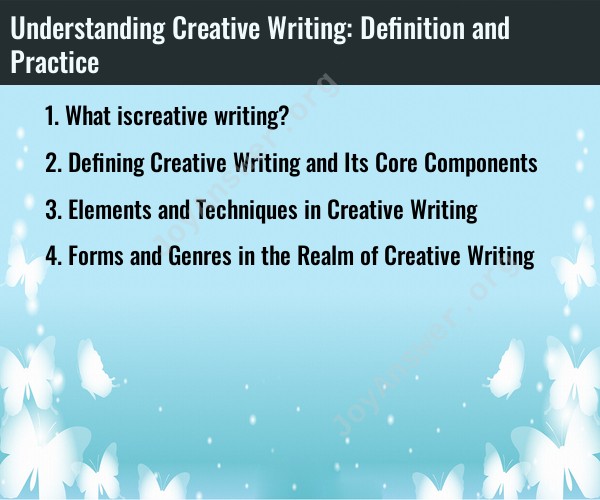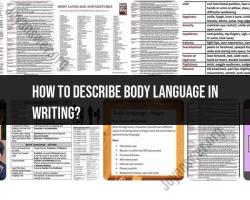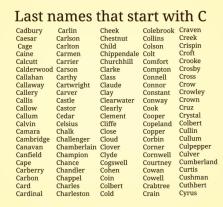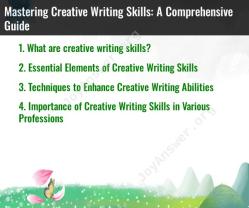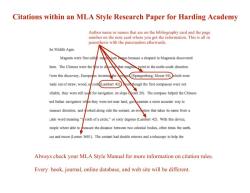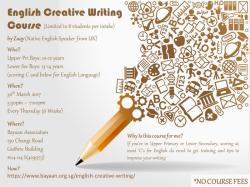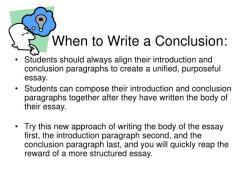What iscreative writing?
Creative writing is a form of artistic expression that involves the crafting of original and imaginative content through the use of language. It encompasses a wide range of literary genres and styles, allowing writers to explore and communicate ideas, emotions, and stories in unique and innovative ways. Creative writing is not limited to any specific format or medium; it can manifest in various forms, including poetry, fiction, nonfiction, drama, screenplays, and more.
Key characteristics of creative writing include:
Imagination and Creativity: Creative writing is characterized by the imaginative use of language to convey ideas, evoke emotions, and create vivid mental images. Writers often draw on their creativity to invent characters, settings, and narratives.
Expressive Freedom: Creative writing provides writers with the freedom to express themselves in a personal and unique voice. It allows for experimentation with language, style, and structure, encouraging writers to find their distinct literary identity.
Narrative Exploration: Many forms of creative writing involve storytelling, whether through short stories, novels, or other narrative structures. Writers have the opportunity to explore characters, plotlines, and themes to engage readers and convey their artistic vision.
Emotional Resonance: Creative writing often aims to evoke emotions and create a resonant connection with readers. Writers use language to convey mood, atmosphere, and the emotional experiences of characters, inviting readers to empathize or reflect.
Literary Devices and Techniques: Writers employ various literary devices and techniques, such as metaphor, simile, symbolism, and foreshadowing, to enhance the depth and richness of their writing. These tools contribute to the aesthetic and artistic qualities of the work.
Diverse Genres: Creative writing spans a broad spectrum of genres and forms, including poetry, fiction (novels, short stories), creative nonfiction (memoir, personal essays), drama (plays, scripts), and more. Each genre offers its own set of conventions and opportunities for creative expression.
Revision and Editing: Like any form of writing, creative writing involves a process of revision and editing. Writers refine their work, revisiting and polishing their prose to enhance clarity, coherence, and overall effectiveness.
Creative writing can be pursued as a personal hobby, a means of self-expression, or as a professional career. Many writers engage in creative writing for its therapeutic benefits, while others aspire to share their stories with a wider audience through publication or performance.
Creative writing courses and workshops are popular educational avenues for individuals seeking to develop their skills and connect with a community of writers. Whether practiced for personal fulfillment or with aspirations of becoming a published author, creative writing is a dynamic and evolving form of artistic expression.
Delving into the World of Creative Writing: Unveiling Core Components, Elements, and Forms
Creative writing, an enchanting dance with words, weaves worlds, breathes life into characters, and evokes emotions through imaginative storytelling. But what truly comprises this art form? Let's embark on a journey to understand its core components, essential elements, and diverse forms.
Defining Creative Writing and Its Core Components:
Creative writing lies at the intersection of imagination and language. It transcends the bounds of factual, technical, or academic writing, instead harnessing the power of words to create fictional narratives, poetry, and other forms of artistic expression. Its core components involve:
- Imagination: The ability to conjure up unique ideas, characters, and worlds, pushing the boundaries of reality and possibility.
- Language: Mastering the use of words, their sounds, rhythms, and nuances, to paint vivid pictures, evoke emotions, and build compelling narratives.
- Storytelling: Structuring and weaving engaging narratives with a distinct plot, fascinating characters, and a powerful theme.
- Voice: Cultivating a unique voice, infused with your personality and perspective, that sets your writing apart from others.
Elements and Techniques in Creative Writing:
To bring your stories and poems to life, a toolbox of essential elements and techniques awaits:
- Plot: The sequence of events that drive the narrative forward, creating tension, conflict, and resolution. Common plot structures include linear, non-linear, and circular.
- Characters: The lifeblood of your story, each with distinct personalities, motivations, and backstories. Character development techniques like internal monologue, flashbacks, and dialogue help flesh them out.
- Setting: The time and place where your story unfolds, contributing to the atmosphere, mood, and even plot possibilities. Descriptions of sights, sounds, smells, and textures make the setting come alive.
- Point of View: The perspective from which the story is narrated, influencing how readers perceive events and understand characters. Options include first-person, second-person, and third-person viewpoints.
- Figurative Language: Similes, metaphors, personification, and other literary devices add layers of meaning, imagery, and emotional impact to your writing.
- Dialogue: The conversations between characters that reveal their personalities, drive the plot, and provide comedic relief or moments of intimacy.
Forms and Genres in the Realm of Creative Writing:
The world of creative writing boasts a dazzling array of forms and genres, each offering a unique canvas for your imagination:
- Fiction: Explore boundless possibilities with novels, short stories, novellas, and flash fiction, crafting imagined worlds and telling compelling narratives.
- Poetry: Give voice to emotions and ideas through rhythmic verses, playing with imagery, sound, and form in sonnets, haiku, free verse, and more.
- Creative Non-Fiction: Blend truth and imagination in memoirs, personal essays, and travelogues, sharing your unique experiences and insights with the world.
- Drama: Bring narratives to life on stage with playwriting, crafting dialogue, action, and character interactions to tell your story.
- Genre Fiction: Immerse yourself in specific literary worlds like science fiction, fantasy, mystery, romance, and historical fiction, each with its own conventions and expectations.
Remember, the journey of a creative writer is ongoing. Keep exploring, honing your craft, and experimenting with different forms and techniques. Your voice, unique and authentic, awaits to be heard through the magic of your writing.
